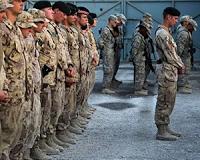| . |  |
. |
Kandahar, Afghanistan (AFP) Nov 17, 2010 Kandahar is rocked by explosions and gunfire most nights but military commanders say that NATO leaders meeting this weekend can be told that the tactics in southern Afghanistan are working. The bustling city that is the spiritual home of the Taliban has been flooded with troops. Combat outposts and heavily-fortified police stations have been built and there is a constant stream of convoys and patrols on the streets. US commanders talk of a more co-ordinated approach to security with their Afghan counterparts while hundreds of millions of dollars are being poured in to the city to shore up its dilapidated infrastructure and improve daily life. In rural areas around Kandahar, too, village elders who just a few months ago were afraid to be even seen working with the government are now participating in "shuras" or local council meetings to make their voices heard. "Cash for work" schemes are also operating to steer away what one US commander in Kandahar called "accidental insurgents" from militancy. But although many Kandaharis say security has improved, some caution that the jury is still out on the attempt to install effective local authorities and police as a crucial follow-up to the huge military surge earlier this year. Insurgents still launch attacks and plant roadside bombs that kill or maim foreign troops, despite the capture of Taliban strongholds in districts like Arghandab, Zhari, Panjwayi and Mahalajat outside Kandahar city. Many Taliban fighters melted into the crowds of refugees fleeing fighting in rural areas after the US-led invasion in late 2001, Kandaharis say, and use the city to launch rocket, grenade and gun attacks on security forces. Afghan police, who are seen as central to the aim of getting the local authorities to take the lead in the fight against the militants, are also a concern. "We feel we could take over security right now," said Faz Mohammed, a former mujahideen fighter who now heads a police station in a semi-derelict building in Kandahar city. US commanders hold men like Faz Mohammed in high regard but they remain worried about the overall standards of professionalism of the Afghan police and military and their ability to work unsupervised. "They suck," one US soldier in Kandahar confided to AFP, in a blunt assessment of the standard of skill, professionalism and motivation of the Afghan police officers based with his platoon. Nevertheless, commanders hope the high-stakes counter-insurgency plan will show the overall "clear-hold-build" strategy in Afghanistan can work, after mixed results in Marjah in neighbouring Helmand province earlier this year. Commanders insist they have the Taliban on the run and there have been dramatic improvements in the Kandahar security forces in recent weeks. "Three months ago there was chaos," US Lieutenant Colonel John Voorhees, whose military police battalion controls the city centre, said recently. "The ANP (Afghan National Police), the ANA (Afghan National Army), the governor... no-one talked to each other. Now look at it," he added at a joint meeting of security forces at the governor's palace. But with Taliban fighters traditionally winding down attacks over the harsh Afghan winter, foreign commanders accept that next June will be the real test of whether the campaign has worked -- and their troops can begin to withdraw. More work is also needed to tackle Taliban threats to government employees, who have either left or not started their jobs in fear of reprisals for working for what militants say is the "puppet" regime of the enemy occupiers. "The Taliban sent letters at night warning me not to work for the government," said a former government employee, Haji Ghafar. "I received several phone messages. They threatened me and my family. "Four to five government employees were getting killed on a daily basis. I don't plan to go back because the Taliban maintain a presence in the city and I'm afraid of them," the 25-year-old added. Violence is still an ever-present threat to progress. Nearly 650 foreign troops have died in Afghanistan so far in 2010, making it the deadliest year for the more than 150,000-strong, NATO-led force since operations began. Civilians also face daily dangers: on Saturday one child was killed and another injured when they were caught in the crossfire of a Taliban attack on Afghan and foreign troops. What happens when foreign forces leave and the local government -- which has traditionally been ineffective -- assumes control is unclear but for now, US commanders refuse to be drawn on the issue. "We've got to fight the battle we have now," said US Lieutenant Colonel Clay Padgett, whose 1-22 battalion of the 4th Infantry Division currently controls the "battlespace" on Kandahar's western fringes.
Share This Article With Planet Earth
Related Links News From Across The Stans
 NATO launches into new era under Afghan cloud
NATO launches into new era under Afghan cloudBrussels (AFP) Nov 17, 2010 NATO opens a new chapter in its history this week when it maps out an end to the combat mission in Afghanistan and draws lessons from the costly war to help shape its vision for the next decade. Leaders from the military alliance meet in Lisbon on Friday and Saturday to endorse a high-stakes plan to start handing over security responsibility to Afghan forces in early 2011 with the aim of giv ... read more |
|
| The content herein, unless otherwise known to be public domain, are Copyright 1995-2010 - SpaceDaily. AFP and UPI Wire Stories are copyright Agence France-Presse and United Press International. ESA Portal Reports are copyright European Space Agency. All NASA sourced material is public domain. Additional copyrights may apply in whole or part to other bona fide parties. Advertising does not imply endorsement,agreement or approval of any opinions, statements or information provided by SpaceDaily on any Web page published or hosted by SpaceDaily. Privacy Statement |